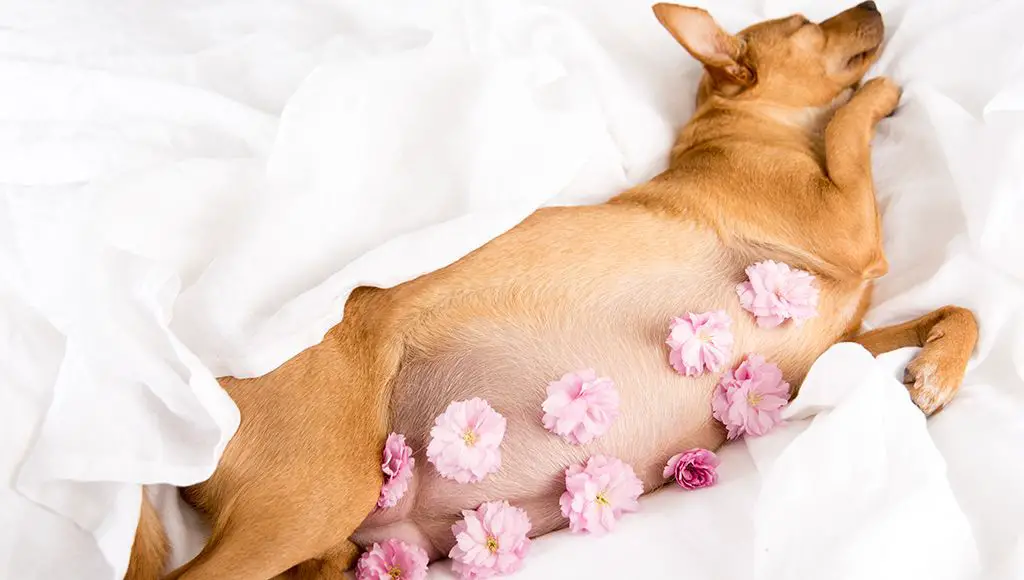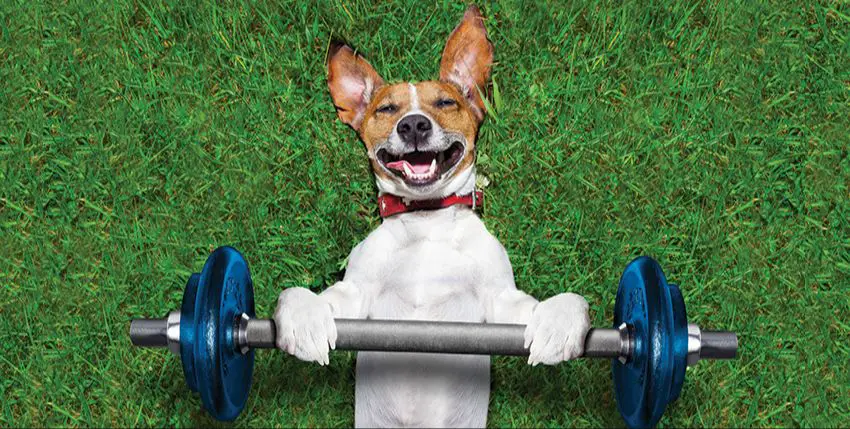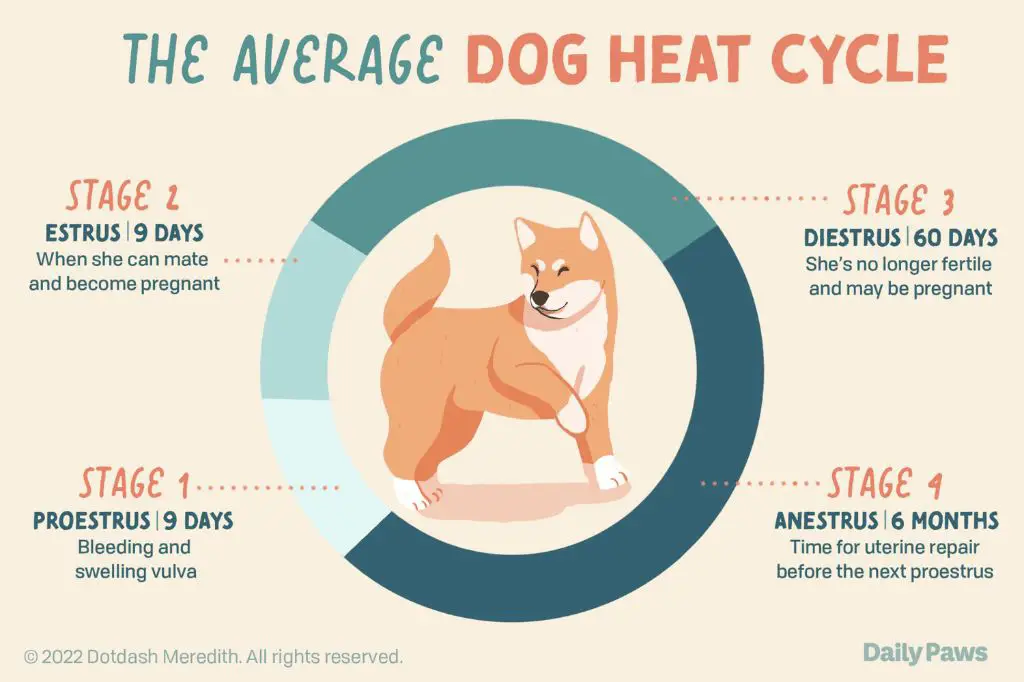Introduction
For dog owners, understanding the estrous cycle is important when breeding and caring for their furry companions. The estrous cycle refers to the reproductive cycle in female dogs, which influences fertility, mating behavior, bleeding, and pregnancy.
This article focuses on how long after vaginal bleeding or estrus a dog can become pregnant. The estrous cycle is complex, but learning the stages and timing can help owners know when their dog is most fertile for breeding purposes.
The Estrous Cycle
The estrous cycle regulates a female dog’s fertility and ability to reproduce. It consists of 4 stages:
Proestrus – The first stage where follicle development begins and estrogen rises, causing swelling of the vulva. This stage lasts around 9 days.
Estrus – The second stage where estrogen levels peak, causing the female to be receptive to mating with males. This is also known as being “in heat”. Estrus lasts around 9 days.
Diestrus – The third stage where progesterone levels rise if pregnancy has occurred, or the female returns to anestrus if not pregnant. Diestrus lasts around 2 months.
Anestrus – The final resting stage where hormone levels are low and no sexual activity occurs. This stage lasts around 3-4 months.
The fertile estrus stage occurs around 9-11 days after the beginning of bleeding during the proestrus phase, which is when mating leads to the highest chances of pregnancy.
When Does Bleeding Occur?
Female dogs experience bleeding during the stage of the estrous cycle known as proestrus. This stage comes before the actual fertile period, when eggs have matured in the ovaries but are not yet ready for fertilization.

Proestrus typically lasts about 9 days on average but can vary from 4 to 20 days, depending on the dog. This is when vaginal bleeding occurs due to hormonal influences on the reproductive tract. The discharge starts out bloody but then progressively becomes lighter in color and more watery. The amount of bleeding also gradually decreases over the course of proestrus as the fertile period approaches.
When is a Dog Fertile?
A dog is most fertile during estrus, which is commonly referred to as her “heat cycle.” This period that a female dog can get pregnant lasts for about 9 days on average, but can range anywhere from 5 days up to 21 days depending on the individual dog.
The most fertile point is generally halfway through the heat cycle, which on average occurs around day 10 from the start of bleeding/proestrus. However, some dogs can ovulate at different times, so it’s ideal to allow breeding throughout the second half of estrus when progesterone levels are elevated.
To maximize chances of pregnancy, it’s recommended to breed every 2-3 days during the most fertile period. Timing breeding 4-5 days after the initial bleeding stops can result in the best conception rates in most dogs. However, fertility needs to be closely monitored, as ovulation timing varies between dogs.
After Bleeding Ends
A dog’s estrus cycle begins 1-2 days after the bleeding from proestrus ends. This marks the start of the estrus phase, when the dog is fertile and ready to breed.
The estrus phase lasts about 5-10 days on average. However, a dog generally remains fertile for the entire duration of estrus until ovulation occurs near the end. This gives breeders a wider fertile window to facilitate successful mating.
It’s important to note that fertility peaks in the middle of the estrus phase. Therefore, the optimal time for breeding is 3-5 days after bleeding stops. This maximizes the chances of pregnancy resulting from the mating.
Owners who do not intend to breed should keep their dogs away from intact males during this entire multi-day fertile period. Accidental matings can easily occur since the female will be attractive to males and allow breeding behavior.
Breeding Considerations
While a dog may be fertile within days of bleeding, there are some important factors to consider when deciding the ideal timing for breeding. The most fertile point is generally 3-5 days after bleeding stops. However, breeding too soon after bleeding ends can result in undersized litters. It’s best to wait until the discharge is no longer bloody. The optimal window is when the discharge is straw colored or clear.
Breeding should be avoided during the initial stages of the heat cycle or when bleeding is still occurring. Mating during this time is unlikely to result in pregnancy. The hormones and conditions within the uterus are not yet ideal for fertilization and implantation. Breeding immediately after the fertile window closes can also be problematic, as the progesterone levels start declining.
Work closely with your veterinarian to identify the optimal 2-5 day period for breeding. Pay close attention to the signs of heat and discharge characteristics. Track the cycles carefully and keep detailed records. Understanding your dog’s unique cycle and patterns is key for successful breeding.
Pregnancy Signs
There are some common physical and behavioral changes that can indicate pregnancy in dogs. These signs usually develop in the latter stages of pregnancy, around 4-5 weeks after fertilization.
Some of the earliest physical signs include the dog’s nipples becoming enlarged and red in color. Her belly will also start expanding. Later in the pregnancy, around 6-7 weeks after fertilization, the dog’s abdomen may sway as she walks due to the weight of the growing puppies.

Some common behavioral signs include reduced activity levels and increased appetite. The dog may eat more frequently but in smaller meals. She may also seek more attention and affection. Some dogs also start nesting behaviors like shredding bedding and looking for cozy spaces in preparation for birth.
These physical and behavioral changes typically become most pronounced in the last 2-3 weeks of pregnancy as the dog enters the final stages before labor and delivery of the puppies. So if a dog is displaying signs of pregnancy, birth is imminent within a few weeks.
Caring for a Pregnant Dog
Providing proper care for your dog during pregnancy is crucial to help ensure the health of the puppies and mother. Here are some important things to focus on:
Nutritional Needs
Pregnant dogs require higher calorie intake to support the developing puppies and changes in their body. Feeding a high-quality puppy or performance dog food is recommended, or you can feed a special diet formulated for pregnant/nursing dogs. Follow your vet’s advice on the amount to feed, which will increase by up to 50% in late pregnancy.
Exercise
Regular gentle exercise is still important for a pregnant dog, but strenuous activity and jumping should be avoided, especially in late pregnancy. Go for short, slower walks each day, along with some play time and interaction. Swimming is also ideal gentle exercise when possible.

Veterinary Care
Take your dog to the vet for a full check-up once pregnancy is suspected. The vet will monitor your dog’s health and the puppies’ development throughout pregnancy. An ultrasound around 4 weeks can confirm pregnancy and check for any issues. Extra vaccinations and deworming may be recommended too. Attend all scheduled vet appointments to stay on top of care.
Other Fertility Factors
A dog’s age, health issues, and frequency of cycling can impact fertility as well. Generally, dogs reach peak fertility between 1-5 years old. Senior dogs over 7 years old tend to have decreased fertility. Certain health problems like hypothyroidism, Cushing’s disease, and uterine disease can also reduce fertility.
How often a dog goes into heat impacts fertility too. Dogs that cycle every 6 months tend to be more fertile than dogs that only cycle once a year. This is because less frequent cycling can result in poor egg quality. Discuss your dog’s particular fertility factors with your veterinarian to determine the optimal time for breeding.
Conclusion

In summary, a female dog can become pregnant around 3 to 13 days after bleeding from her heat cycle ends. This fertile window begins a few days after the bleeding stops and lasts about 10 days. It’s important to closely monitor your dog after she finishes bleeding if you do not want her to become pregnant. The most accurate way to know if she is fertile is by testing her progesterone levels or having a vet examine her.
Responsible breeding requires carefully timing matings, providing excellent prenatal and postnatal care, screening for health issues, and finding good homes for the puppies. While an accidental litter may occasionally occur, it’s important not to purposefully breed dogs too often or without preparation. There are already many dogs in need of adoption. Breeding should only be undertaken to improve the breed or produce working dogs, not for profit. Therefore, closely supervise any intact female dogs during their heat cycle to avoid unwanted litters.